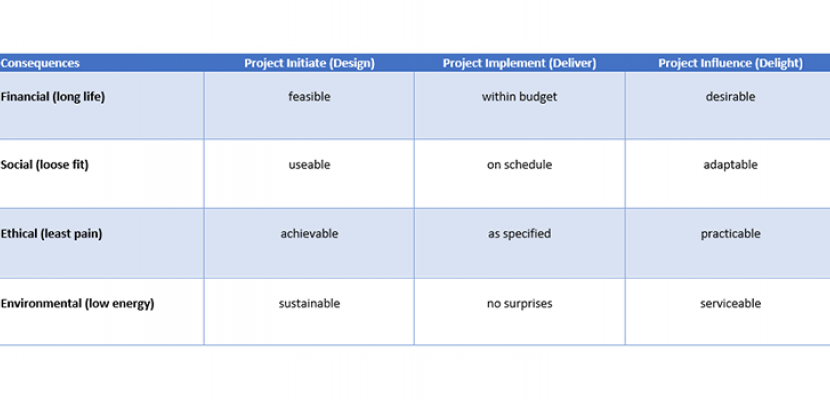
You’ve heard of project management, but what about megaproject management? As the name suggests, a megaproject takes things to the next level, with a much larger investment (typically US$1bn and more) and often, a huge number of considerations that vastly outweigh your average project.
Although you may not realise it, you will have heard of hundreds of megaprojects that have made global news in your lifetime. These can range from new aircraft prototypes to disaster relief (e.g., the Hurricane Katrina clean-up), Olympic Games venues and space exploration projects. However, one of the most popular megaprojects you will likely have witnessed is the construction and implementation of new transportation systems, whether that's road, rail, aviation or port facilities.
For on-campus Bondies, the Gold Coast Light Rail (AKA G:link) surely comes to mind. Bond University's Centre for Comparative Construction Research (CCCR) has recently developed an analytical model called i3d3 that can measure the success of megaprojects (or any project, really) and rank them against one another on a scale to prove which are the most successful.
We spoke to Professor Craig Langston about this research and a resulting study into the performance of the first two stages of the Gold Coast Light Rail.
What is i3d3?
The most widely used technique for measuring the performance of projects, products, events and other change initiatives is called multi-criteria decision-making, also known as MCDM. This is essentially what it says on the tin – a method of making choices that takes multiple factors into consideration. We use MCDM in our daily life, probably unwittingly – for instance, when purchasing a product, we may weigh up cost, quality, convenience and other variables before we make our all-important final choice.
In project management, MCDM has replaced traditional monetary approaches like discounted cash flow and social cost-benefit analysis because it can better consider non-financial criteria – think social, ethical and environmental consequences.
CCCR’s i3d3 model is a modern variant of MCDM that can be used to effectively measure the success of multi-layered projects like the Gold Coast Light Rail. i3d3 ranks project performance on a scale between -100 and +100 considering 12 critical success factors.
Each of these factors falls under one of three project phases – project initiate (design), project implementation (deliver) and project influence (delight). They cut across the four overarching consequences of making decisions – financial, social, ethical and environmental criteria.

The i3d3 model also, importantly, takes the United Nations 17 Sustainable Development Goals into account. These can be categorised as either financial, social, ethical or environmental, and form part of the evaluation process when using this method to analyse project success.
What does this mean for project management?
The development of the i3d3 model is an important and impactful part of CCCR’s overall research agenda. The project began with an idea, a handful of journal papers and a team of PhD students, each exploring a different facet of the topic.
It then grew through paid research consultancies with the Asian Infrastructure Investment Bank and the Economist Intelligence Unit. Now, it has matured into a tool that project managers everywhere can use and has even been endorsed by the Global Alliance for the Project Professions (GAPPS), making it a go-to tool for project decision-makers.
Professor Langston has led this research from the beginning and is incredibly proud to see it finally coming to fruition.
“Project managers now have a tool, made freely available by Bond to anyone, that will permit them to measure success agnostic to project type, size, location or date,” he says.
Professor Langston believes that i3d3 is unique in that rather than comparing ‘apples with apples’, as the saying goes, its strength is in comparing ‘apples with oranges’ in a way that hasn’t been possible before.
“Whether you’re building a doghouse or an opera house, it’s now possible to objectively analyse outcomes for various project initiatives. This tool enables success to be measured and initiatives to be ranked within an organisational portfolio, a specific community or region, or more broadly, within a domestic or international context,” he says.
Using i3d3 to measure success of the Gold Coast Light Rail
CCCR, in conjunction with GoldLinQ, has completed a study into the success of Stages 1 and 2 of the Gold Coast Light Rail megaproject. Stage 1 saw the initial implementation of this commuter tram project with services from Broadbeach South to the Gold Coast University Hospital, while Stage 2 extended this line to Helensvale. Both stages are now in operation, with construction on Stage 3 (Broadbeach South to Burleigh) about to begin and Stage 4 (Burleigh to Coolangatta) undergoing design. Of course, there’s the possibility of further developments as well.

The G:link meets the definition of a megaproject due to its high project value, and after evidence-based analysis, has received an i3d3 ranking of +23. As this score is greater than zero, the G:link can be validated as successful. This score takes account of the 12 critical success factors, which all returned positive results, and ultimately proved that the project is ‘progressive’ (as opposed to ‘regressive’). By these standards, we can conclude that G:link has made an important contribution to the Gold Coast community.
“With i3d3 available for widespread use, there is now an opportunity to evaluate a range of projects over time, objectively demonstrating their performance and exploring the lessons learnt from success and failure,” Professor Langston says.
For i3d3 to have maximum effect, evaluations must become a routine part of the project management process. Professor Langston says that he and the CCCR would like to see i3d3 become a validated marque of project success used in projects of all types across Australia, and ultimately, globally.
Learn more about CCCR here.